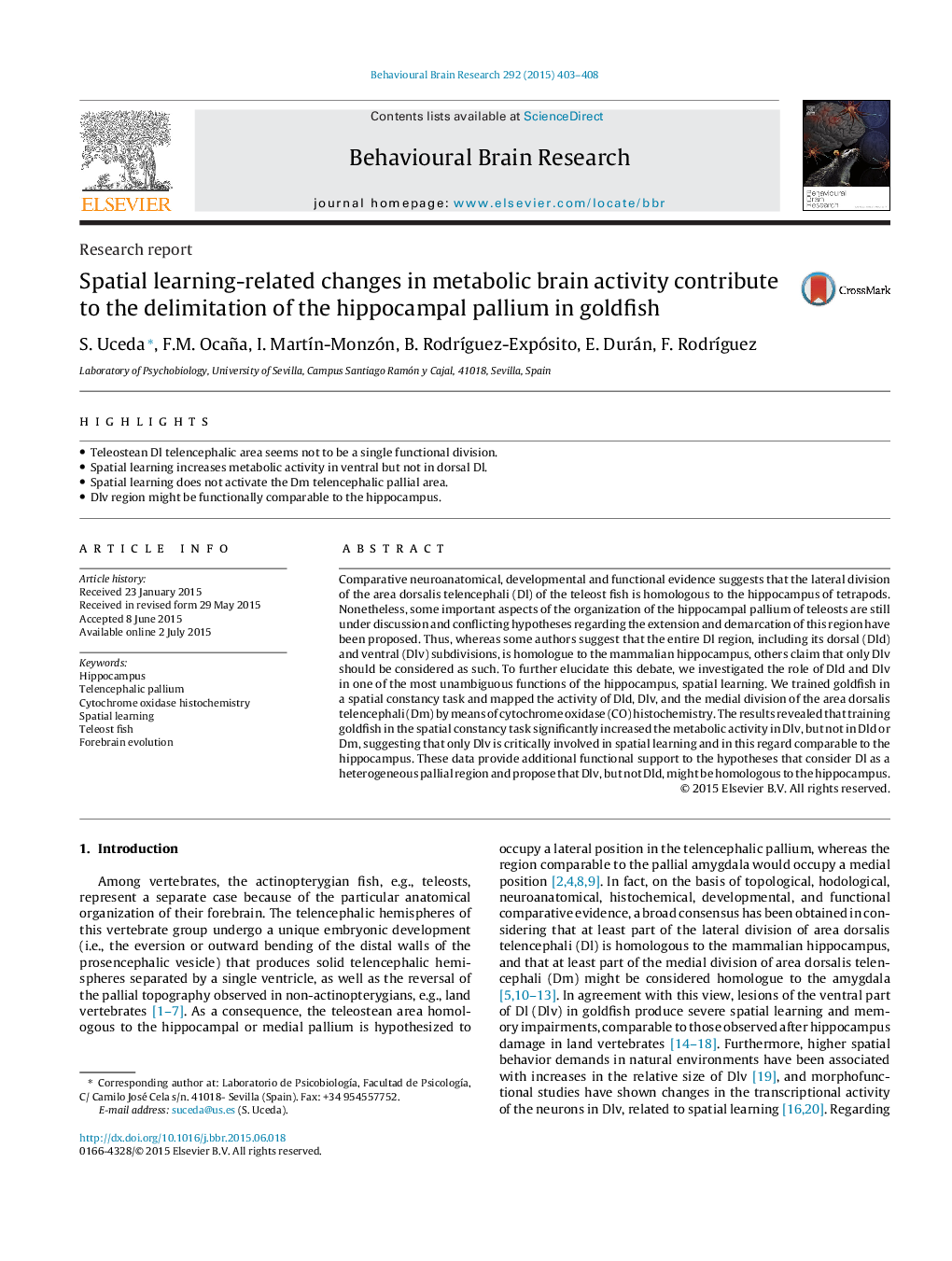| Article ID | Journal | Published Year | Pages | File Type |
|---|---|---|---|---|
| 6256536 | Behavioural Brain Research | 2015 | 6 Pages |
â¢Teleostean Dl telencephalic area seems not to be a single functional division.â¢Spatial learning increases metabolic activity in ventral but not in dorsal Dl.â¢Spatial learning does not activate the Dm telencephalic pallial area.â¢Dlv region might be functionally comparable to the hippocampus.
Comparative neuroanatomical, developmental and functional evidence suggests that the lateral division of the area dorsalis telencephali (Dl) of the teleost fish is homologous to the hippocampus of tetrapods. Nonetheless, some important aspects of the organization of the hippocampal pallium of teleosts are still under discussion and conflicting hypotheses regarding the extension and demarcation of this region have been proposed. Thus, whereas some authors suggest that the entire Dl region, including its dorsal (Dld) and ventral (Dlv) subdivisions, is homologue to the mammalian hippocampus, others claim that only Dlv should be considered as such. To further elucidate this debate, we investigated the role of Dld and Dlv in one of the most unambiguous functions of the hippocampus, spatial learning. We trained goldfish in a spatial constancy task and mapped the activity of Dld, Dlv, and the medial division of the area dorsalis telencephali (Dm) by means of cytochrome oxidase (CO) histochemistry. The results revealed that training goldfish in the spatial constancy task significantly increased the metabolic activity in Dlv, but not in Dld or Dm, suggesting that only Dlv is critically involved in spatial learning and in this regard comparable to the hippocampus. These data provide additional functional support to the hypotheses that consider Dl as a heterogeneous pallial region and propose that Dlv, but not Dld, might be homologous to the hippocampus.
